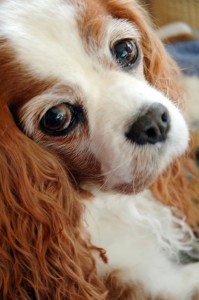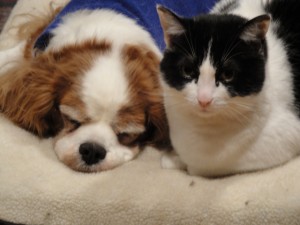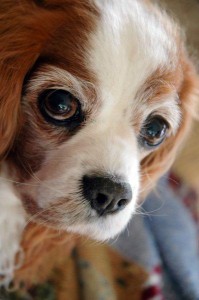 How do we deepen the bond between humans and animals?
How do we deepen the bond between humans and animals?
Start with this handout I gave away at a recent seminar on this topic moderated by noted animal communicator Joan Ranquet.
Mindset
Change your mindset, change your world. When we look at the world as equals, we learn that humans aren’t in charge of the world, we’re in connection with it. What does that mean for your multi-species family?
- Are your animals pets or family members? What are the practical, cultural, mystical, and humorous dimensions of our lives with animals?
Legal/Financial Issues
Two ideas to make life easier.
- Put a card in your wallet directing emergency responders to your animals. What happens to them if you don’t make it home, whether you’re suddenly ill, in an accident, or stuck in a snowstorm? Can neighbors get in?
- Put your animals in your will! Make legal and financial provisions for their care. My particular advice: separate the financial guardianship from the care guardianship. Peace of mind all around.
Health Issues
Honestly, it’s almost like you wade through disinformation throughout your animals’ lives. Best advice: read up and fire anyone, veterinarian or not, who insists on being the boss of you and your animals. Go for care providers who really care, are really smart, and who know what they’re doing.
My sore spot: the absolute lies about early spay/neuter that are being told by the animal welfare community. Here’s the truth:
- Be informed: “The traditional spay/neuter age of six months as well as the modern practice of pediatric spay/neuter appear to predispose dogs to health risks that could otherwise be avoided by waiting until the dog is physically mature, or perhaps in the case of many male dogs, foregoing it altogether unless medically necessary.” From Laura Sanborn’s article.
What we don’t know can kill our animals. What we do know:
- Take a female dog through at least two heat cycles.
- There is almost no reason to ever neuter a male dog.
- The decision to spay/neuter any animal should only be made by the family with full knowledge of the issues and the support of an informed veterinarian.
- Politics and big money have been trumping common sense and actual research findings on this issue since the 1970s.
Sources:
My online magazine: BridgingtheParadigms.com. Yes, just hit the search bar and you’ll find my articles on this heartbreaking subject.
Ron Hines DVM. A well-rounded article on early spay/neuter.
Laura J. Sanborn. Research on early spay/neuter.
Bottom line: When you make a commitment to an animal, it’s a life choice. Don’t make one you regret because you’re not informed. The life you save, the healthy animal you’ll help create, may be yours.
Spread the word: love matters, choice matters, the truth matters. You’re not getting it from a lot of people in the animal welfare community. You did get it here.
© 2012 Robyn M Fritz
 I ended up in the ER on a Sunday evening last month. While I was facing a potentially serious health crisis, there was one thing I didn’t worry about: my dog, Alki, and Grace the Cat were provided for. Sort of. That’s what the human-animal bond, my concept of multi-species families, includes: taking care of them.
I ended up in the ER on a Sunday evening last month. While I was facing a potentially serious health crisis, there was one thing I didn’t worry about: my dog, Alki, and Grace the Cat were provided for. Sort of. That’s what the human-animal bond, my concept of multi-species families, includes: taking care of them.
 It’s hard to say goodbye to a beloved animal companion.
It’s hard to say goodbye to a beloved animal companion.
 Sometimes an issue is so politicized, the cultural issues so huge, you can’t imagine making a difference.
Sometimes an issue is so politicized, the cultural issues so huge, you can’t imagine making a difference.